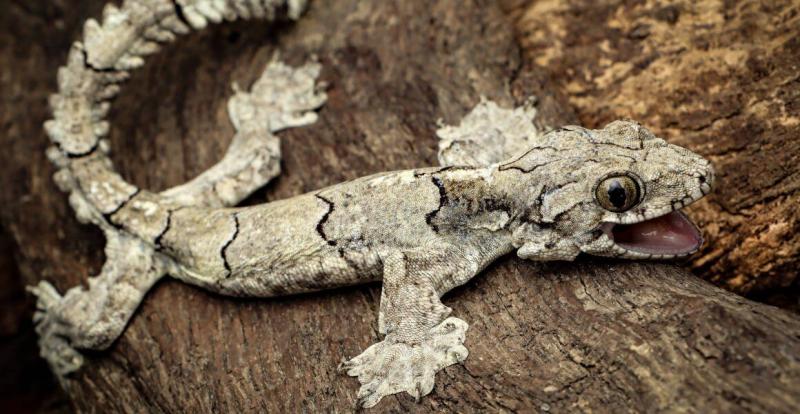
Researchers from Mizoram University and Max Planck Institute for Biology have discovered a new species of gliding gecko from the forests of Mizoram. They have named it Gekko mizoramensis or the Mizoram parachute gecko, named after the state where it was discovered.
Reptiles are one of the oldest surviving classes of animals evolving around 312 million years ago. Geckos are one of the oldest reptile groups still alive today, with more than 1200 species of geckos found around the world making up around a fifth of all known lizards. They are found on all the continents, except Antarctica, but usually seem to prefer warmer climates. Geckos are mostly carnivorous reptiles.
Flying or gliding geckos, as the name suggests are a type of geckos with a flap of skin on either side of its body that balloons out when hit with air from underneath, much like a parachute. This allows the reptile to glide between trees, by jumping off of one and gliding to another, while steering with the help of the flaps and webbed feet.
Although a specimen of the new species G. mizoramensis was collected in early 2001, it was misidentified as another species, Gekko lionotum, the only other species of gliding gecko found in Mizoram. It was only recently identified as a completely new species after DNA analysis was done on the specimen. G. mizoramensis is very similar to another species of gecko, Gekko popaensis found mostly in Myanmar over 700 km away, only differing slightly in size and colouration. The researchers believe that the species evolved as a result of being separated from G. popaensis, its closest relative, by the Arakan Mountains. The researchers collected specimens of the new species from different parts of Mizoram including the wildlife sanctuary in the Kolasib district, Dampa Tiger Reserve, and Lawngtlai district.
The discovery once again sheds light on just how much of the forests of northeast India remain unexplored. Exploration of the region has been particularly challenging due to its dense forests, thickly wooded areas and proximity to the border areas of the country. Just the last five years have witnessed the discovery of several new species of various biodiversity, including frogs, trees, crickets, butterflies and moths.
According to Zeeshan Mirza, who co-authored the paper describing the new species, "The wildlife of northeast India isn't as well-known as it could be because of the amount of dense forest. While recent development has opened up access, forest clearance endangers its biodiversity.”
The researchers also believe that the region might be home to a lot more new species of lizards, with many more geckos to be found not just in India, but also in areas bordering Bangladesh and Myanmar.
"Most research in the past has focused on charismatic fauna such as birds and mammals, leaving reptile species underexplored. My surveys of the region have uncovered several new species, including Salazar's pit viper, which is named after a character from Harry Potter. With additional fieldwork, I am confident that more new reptile species will be discovered in the region." adds Zeeshan about the lack of reptilian research in the region and the potential for the discovery of many more.





